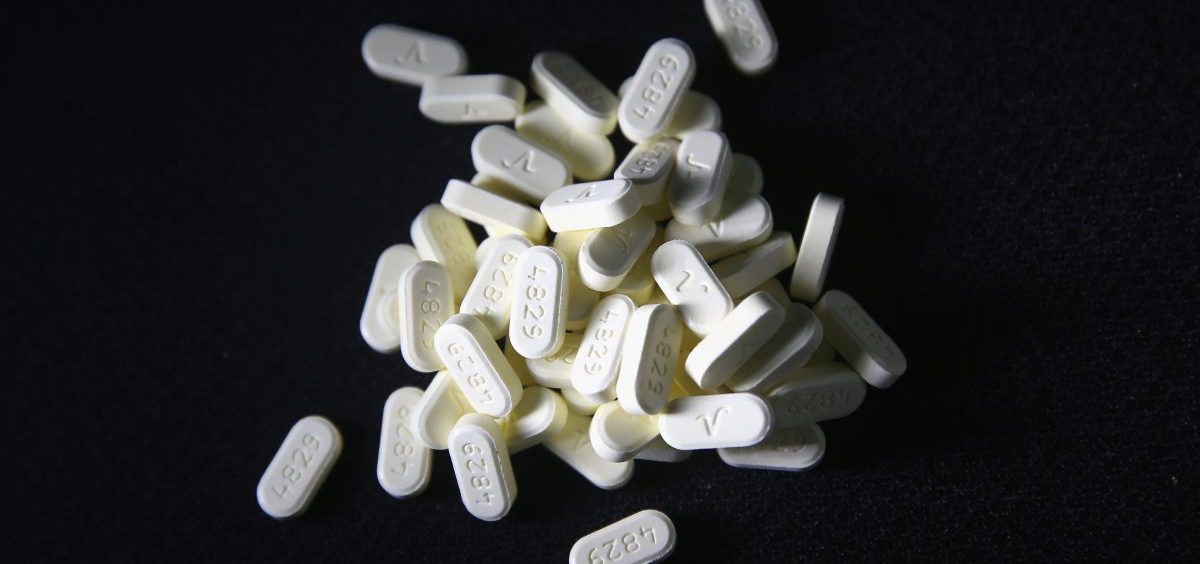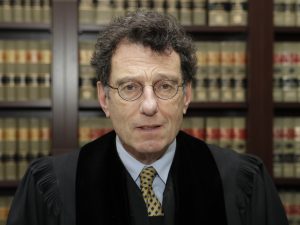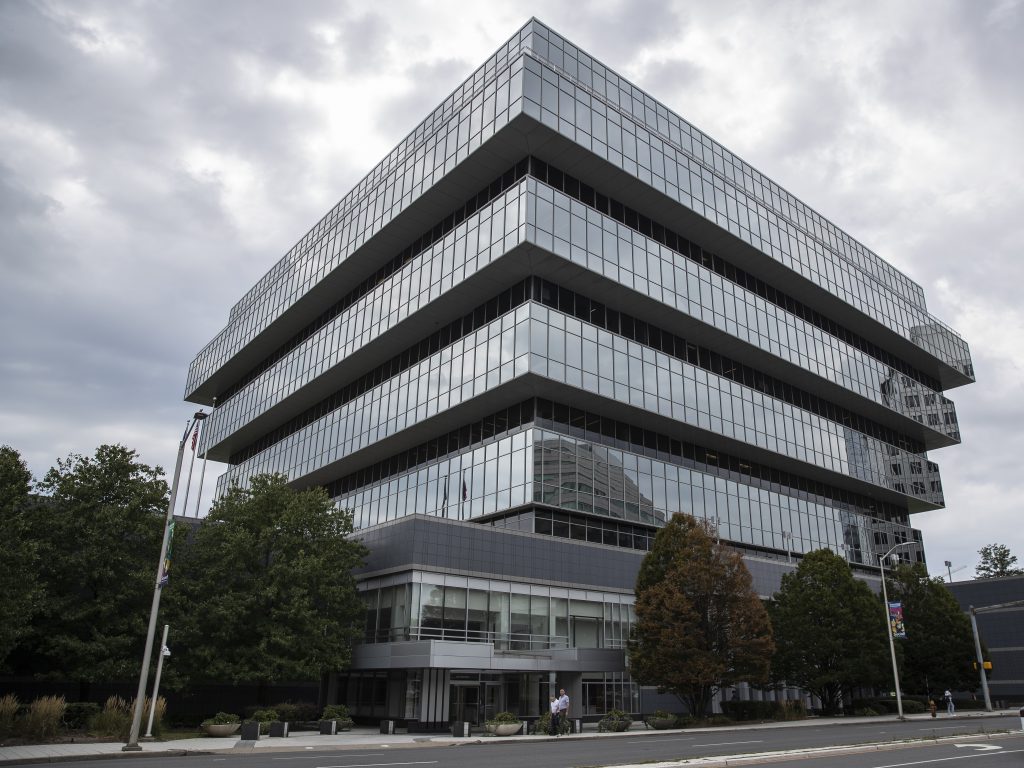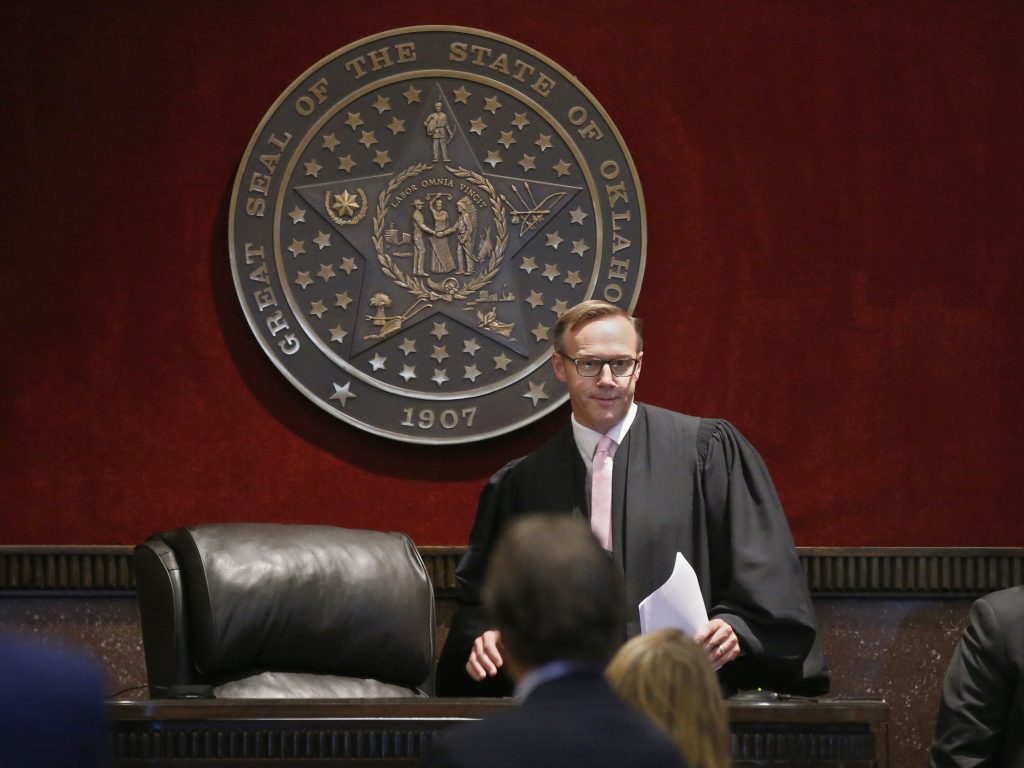News

Your Guide To The Massive (And Massively Complex) Opioid Litigation
By: Colin Dwyer | NPR
Posted on:
In less than a week, a landmark battle over who bears responsibility for the U.S. opioid crisis will begin in federal court.
The case involves thousands of plaintiffs at virtually every level of government and defendants from every link in the chain of opioid drug production — from major multinational corporations such as Johnson & Johnson and CVS, right down to individual doctors. And on Oct. 21, the first trial is set to kick off before a judge in the Northern District of Ohio.
And with the costs of the crisis estimated at tens of billions of dollars and with more than 200,000 overdose deaths since the late 1990s, the stakes are immense — even for people who have never heard of this case. What happens with it will largely determine how much money cities and counties nationwide will have to fight the devastating effects of opioid abuse and when they’ll get it.
But the case is also intensely complicated. So let’s begin with the basics.
How will a case this big work, and why is it in Ohio?
As you can imagine, it’s ridiculously complicated to have a slew of different opioid-related lawsuits all playing out in different U.S. courts.
So a judicial panel decided to streamline things by putting the more than 2,000 pending lawsuits under the watchful eye of a single federal judge who will be responsible for guiding pretrial motions and keeping everyone on the same page. The consolidated lawsuit is called the National Prescription Opiate Litigation.
And the panel chose the Northern District of Ohio for several reasons: It’s geographically convenient for the defendants, the state has been hard hit by opioid overdoses and Judge Dan Polster, who will oversee the process, has experience overseeing consolidated cases. Once all the pretrial wrangling ends, the various cases will then be sent back to their original courts, which are responsible for conducting those trials — at least in theory.
That’s because with multidistrict litigation, things very rarely get that far. The vast majority of these big cases reach settlements before they go to trial, and that’s kind of by design: Getting everyone in the same room, so to speak, has a way of getting everyone on the same page.
And the judge has made clear that he would like the parties to settle rather than go to trial.
So then what’s happening on Oct. 21?
Deadlines have a way of inspiring urgency. So Judge Polster took the lawsuits filed in his own district that he can oversee at trial — namely those by Ohio’s Summit and Cuyahoga counties — lumped them together and scheduled the proceedings to start Oct. 21. It’s the only lawsuit, so far, with a trial date.
All eyes are now trained on this bellwether trial, with plaintiffs and defendants alike watching to see how strong certain arguments are, how much money is at stake and other details that will inform negotiations in their own trials.
They’re also watching to see whether the parties here agree to settle. Some of the defendants — opioid manufacturers Johnson & Johnson, Mallinckrodt, Endo International and Allergan — have tentatively agreed to separate deals with the two Ohio counties, deals which still await final approval.
That leaves just a handful of companies still on track for this trial: drugmaker Teva Pharmaceutical; the nation’s big three drug distributors, McKesson, Cardinal Health and AmerisourceBergen; and Walgreens and a small distributor called Henry Schein.
Who are the defendants in the nationwide case?
They include some of the health care industry’s biggest names, only a small fraction of which will be involved in the bellwether trial on Oct. 21. The others named in the consolidated federal case range from individual physicians and pharmacies to huge conglomerates such as CVS, Walmart and Albertsons.
The full list is way too long to reproduce; you can find it here instead.
OxyContin manufacturer Purdue Pharma had been on that list, until it filed for Chapter 11 bankruptcy protection as part of a settlement deal announced last month. The move to a bankruptcy court in White Plains, N.Y., has frozen all lawsuits against the company. (More on that later.)
What are the defendants accused of?
Broadly speaking, all these companies have been accused of fueling the nation’s opioid crisis to line their own pockets — drugmakers by aggressively marketing their opioid treatments while downplaying addiction and overdose risks, and distributors by failing to detect, probe or report suspicious orders.
Historically, opioid medications in the U.S. were prescribed in cases of extreme need or for patients suffering a terminal illness. But in the late 1990s, the pharmaceutical industry began aggressively pushing the drugs for use in a much wider range of applications.
Even as they were doing this, many companies knew that the risks of abuse and addiction were much higher than their marketing materials indicated, according to internal documents released in the past year.
The defendants, for their part, maintain that their medications were highly regulated, with each transaction monitored by federal officials. They also point out that pills sold into hard-hit communities were shipped only when a licensed physician wrote a prescription.
Ultimately, as complicated as the case is, the question at its core is actually pretty simple: What responsibility does the pharmaceutical industry bear for its alleged role in a deadly manmade epidemic?
Who are the plaintiffs?
Up until recently, the list included more than 2,500 cities, counties, tribal authorities and individuals from across the U.S. — from Tacoma, Wash., to Cumberland County, Ky.
That number exploded last month when Judge Polster, who has repeatedly encouraged “global settlement” deals with Big Pharma, approved a plan to create something

It’s a novel concept that permits lawyers for a group of 49 local governments to hammer out any settlement deals on behalf of every city and county in the U.S., unless a city or county explicitly opts out of the arrangement.
Here’s a sketch of how that works:
If they reach a deal with a particular company, it will be put to a vote among members of the entire negotiation class; if enough of them approve — and if the judge signs off — the deal is inked and binding. That would essentially resolve any other lawsuits against the company in the consolidated federal case, and it would protect the company from future lawsuits by cities and counties at the federal level.
“The usual class action — the way it works is you have a class representative and they decide whether it’s a good settlement or not. Here we’re letting people vote. We have a much bigger input — that’s the novel thing here,” says Alexandra Lahav, a University of Connecticut law professor.
“This is totally uncharted territory,” she adds. “There’s no model for any of it.”
Plaintiffs generally like the arrangement because it increases their bargaining power and leverage. Defendants like it because they fear agreeing to pay billions of dollars in a settlement with 2,000-plus plaintiffs, only to then be sued by another 2,000-plus cities and counties.
It’s worth noting that states aren’t technically plaintiffs in this federal case. But that hasn’t stopped them from weighing in — such as when 37 attorneys general wrote to the court trying to derail the negotiation class plan because they said it would hobble their bargaining power in their own separate lawsuits in state court.
What do the plaintiffs want?
In a very basic sense, the plaintiffs seek the same thing: compensation for the truly gargantuan sums they’ve spent in grappling with health care and crime issues since the 1990s, when drug companies began marketing their highly addictive opioid pain pills.
But look closely, and you’ll find significant friction between the state attorneys general and the local governments. They’ve clashed frequently — not just over the negotiation class but also over who should take the lead in pretrial negotiations and how to divvy up potential settlement monies.
That’s partly because of what happened 20 years ago with Big Tobacco. Bitter memories linger from the 1998 settlement between the nation’s largest cigarette companies and nearly every state and U.S. territory. Plenty of local governments say that very little of the $246 billion from the deal has trickled down to them, and many are bent on not letting state governments — which they see as middlemen — command the money they need to combat another public health crisis.
Summit County put it this way in a statement issued in August: “At this level of government, we are in the best position to serve our local communities and we know what we have spent and what we need for the future.”
Many state attorneys general wonder where that leaves them, if the coffers of drugmakers already have been drained by local governments.
Also worth noting: While this is a civil case, some lawmakers are also calling for criminal charges for drug company executives and owners, such as the family that owns Purdue. “The Sackler family does not belong in bankruptcy court,” Rep. Max Rose, D-N.Y., has said. “They belong in handcuffs.”
But David Noll of Rutgers Law School says a criminal case might just “put the brakes on anything going forward” in civil court.
If the Sacklers and others are criminally prosecuted, “there is a possibility that they’ll have to pay restitution. And their position will be, ‘The money which we had earmarked for the settlement now can’t be used for that purpose because we have to preserve our ability to satisfy a criminal judgment,’ ” Noll says. “That may explain why nobody has pulled the trigger on filing a criminal action against them.”
What’s the deal with that Purdue settlement?

Massachusetts Attorney General Maura Healey, who has sued the company, says that in the past decade, the Sackler family ramped up marketing for the drug and milked billions of Purdue’s profits for themselves.
In an attempt to blunt the effects of litigation, Purdue reached a settlement agreement in principle last month with plaintiffs. Under its terms, the company says it would have to:
- File for Chapter 11 bankruptcy protection, which it did days after reaching the agreement
- Dissolve and transfer all of its assets to a new company with a board selected by the plaintiffs, and with a mission to potentially supply “tens of millions of doses of opioid overdose reversal and addiction treatment medications at no or low cost”
- Give the plaintiffs $3 billion of the Sacklers’ money, as well as billions more in future revenue from OxyContin sales.
Purdue’s shift to bankruptcy court, which will be responsible for approving this deal, automatically froze all the litigation against the company. And Purdue is expected to push for that protection to be extended to the Sacklers themselves — a major concession that upsets critics of the deal. (More on those critics in a second.)
This settlement, according to supporters such as Ohio Attorney General Dave Yost, is the preferred alternative to “years of additional litigation in the forlorn hope of getting more personal money for corporate conduct.”
Backers also say that seeking more from the Sacklers’ personal fortune would be a costly uncertainty, with no guarantees aside from heaps of extra attorney fees and time lost while the opioid crisis continues. Meanwhile, they say, a much-needed — and hard-won — solution is just waiting there to be signed.
But the deal has detractors, right?
Roughly two dozen state attorneys general object to it. They say plaintiffs should push for much more from Purdue and the Sacklers, particularly if a deal means ending litigation against both.
“We don’t believe this settlement was worth anywhere near the $10 billion to $12 billion that Purdue is saying that it is,” Healey of Massachusetts told NPR. “There’s no admission of wrongdoing or liability. And we also want to see all the documents in Purdue’s possession online, available to the public, because the story of what happened here really needs to be told.”
New York Attorney General Letitia James, for one, has accused the Sacklers of quietly transferring $1 billion from the company to their own offshore accounts, to hide it from creditors in bankruptcy court. The court would have the power to claw back that money if it finds evidence of wrongdoing.
Pennsylvania Attorney General Josh Shapiro voiced still another concern to NPR: “The idea that we are going to profit off of continued sales of opioids, the very product that is getting people hooked on heroin and fentanyl and leading to the loss of 12 lives every single day in Pennsylvania, is problematic at best.”
If the bankruptcy court approves the settlement, all the parties involved — even the attorneys general who vehemently reject it — would be bound by its terms.
“It doesn’t matter if you were a settling party or a non-settling party, it doesn’t matter if you knew nothing about it, it is binding on your client,” says University of Georgia law professor Lindsey Simon. “That’s the power of bankruptcy. It impacts everything.”
What about the defendants who haven’t settled yet?
Here’s an important thing to remember: Even if a company has settled with the two Ohio counties in next week’s bellwether trial, as Johnson & Johnson and others have, it remains on the hook for all of the other lawsuits in the consolidated federal case. And by settling with Johnson & Johnson and other companies individually, the two counties have effectively opted out of any money they could get from a negotiation class settlement with those specific companies.
(Have we mentioned that this is ridiculously complicated?)
Nevertheless, a willingness to settle the bellwether might suggest a willingness to settle the other claims — and so far, drug manufacturers have proven amenable to striking a pretrial deal. As we noted earlier, nearly all of the drugmakers originally named in the lawsuits filed by Summit and Cuyahoga counties have already agreed to a settlement.
But a number of distributors and pharmacy chains seem ready to fight it out. Cardinal Health, McKesson, AmerisourceBergen and others remain on track for next week’s trial, and attorneys for those three drug distributors even sought to have Polster pulled off the case. They said his comments pushing for settlements and his remarks such as “everyone shares some of the responsibility” for the opioid epidemic “more than raise a reasonable question about the Court’s impartiality.”
Polster predictably rejected the motion; and the 6th U.S. Circuit Court of Appeals recently backed him up, saying the judge “pushed for settlement not because he had prejudged the case, but because that was the most expedient way to conclude the dispute.”
Wait, wasn’t there already a trial in Oklahoma?

By deceptively marketing its painkillers, the judge said, Johnson & Johnson caused a crisis “that is evidenced by increased rates of addiction, overdose deaths and neonatal abstinence syndrome in Oklahoma.”
It was not all good news for prosecutors, however.
Attorneys for the state had sought more than $17 billion to combat the crisis over the next three decades. But Balkman found the company liable for only $572 million, because “the state did not present sufficient evidence of the amount of time and costs necessary beyond year one to abate the opioid crisis.”
Johnson & Johnson has since appealed the ruling, and the amount it must pay.
Purdue and Teva were also named in the lawsuit, but they settled before the trial began: Purdue for $270 million, meant to go toward addiction treatment programs, and Teva for $85 million.
Just how much money has the nation’s opioid crisis cost?
These numbers can be tough to pin down, but one thing isn’t in dispute: Between the costs of health care, criminal justice, lost productivity and addiction treatment programs, agencies at every level of government have combined to lose tens of billions of dollars trying to combat the crisis.
A study published by the National Institutes of Health in 2013 placed the national economic burden at $78.5 billion. With roughly 70,000 people dying annually from drug overdoses — more than half of them related to opioids — today’s cost is likely far higher.
Others have placed the financial effects at anywhere from around $50 billion to upward of $1 trillion since 2001, with another half-trillion projected by 2020.
9(MDI4ODU1ODA1MDE0ODA3MTMyMDY2MTJiNQ000))

